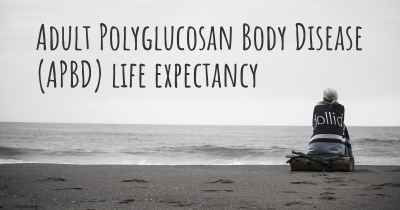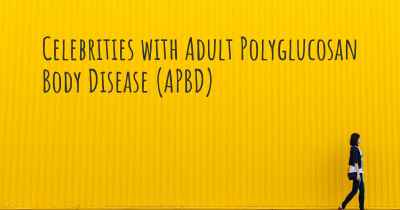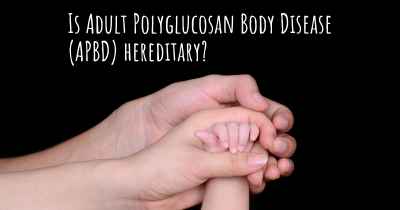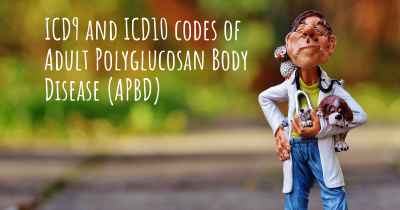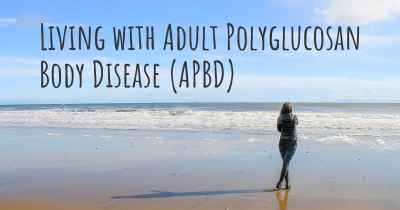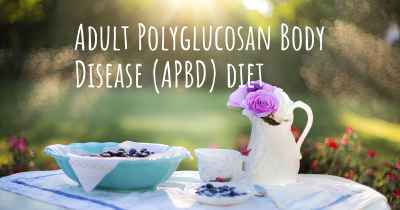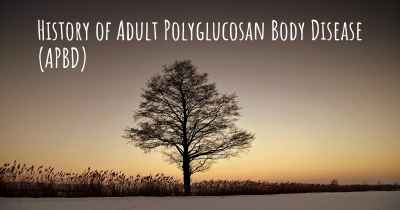Is there any natural treatment for Adult Polyglucosan Body Disease (APBD)?
Are there natural treatment(s) that may improve the quality of life of people with Adult Polyglucosan Body Disease (APBD)? Here you can see if there is any natural remedy and/or treatment that can help people with Adult Polyglucosan Body Disease (APBD)
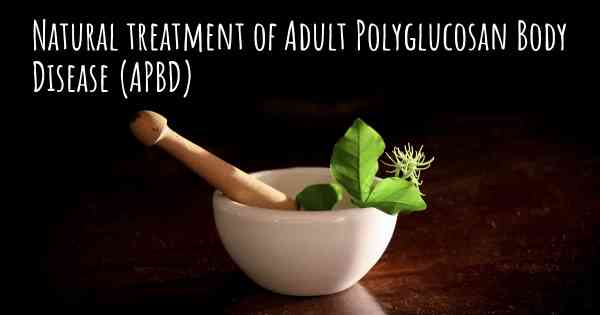
Adult Polyglucosan Body Disease (APBD) is a rare genetic disorder that affects the nervous system. It is characterized by the accumulation of abnormal glycogen deposits in various tissues, particularly in nerve cells. APBD typically presents in adulthood and can lead to progressive neurological symptoms such as muscle weakness, difficulty walking, bladder dysfunction, and cognitive impairment.
While there is currently no known cure for APBD, there are several natural treatment approaches that can help manage the symptoms and improve the quality of life for individuals with this condition. It is important to note that these treatments should be used in conjunction with medical advice and under the supervision of healthcare professionals.
Lifestyle Modifications
Adopting certain lifestyle modifications can be beneficial for individuals with APBD. These include:
- Regular Exercise: Engaging in regular physical activity, as tolerated, can help maintain muscle strength and flexibility. It is important to consult with a physical therapist or healthcare provider to develop an appropriate exercise program.
- Healthy Diet: Following a balanced diet that is rich in fruits, vegetables, whole grains, and lean proteins can support overall health. It is advisable to consult with a registered dietitian to ensure nutritional needs are met.
- Stress Management: Stress can exacerbate symptoms in APBD. Practicing stress-reducing techniques such as meditation, deep breathing exercises, or engaging in hobbies can help manage stress levels.
Physical and Occupational Therapy
Physical and occupational therapy can play a crucial role in managing APBD symptoms. These therapies aim to improve mobility, enhance muscle strength, and maintain independence in daily activities. Physical therapy may include exercises, stretching, and gait training, while occupational therapy focuses on adapting the environment and teaching strategies to perform tasks more easily.
Assistive Devices
Assistive devices can help individuals with APBD maintain mobility and independence. These may include:
- Orthotic Devices: Braces or splints can provide support and stability to weakened muscles, aiding in walking and preventing falls.
- Mobility Aids: Canes, walkers, or wheelchairs may be necessary to assist with mobility as the disease progresses.
- Adaptive Equipment: Various tools and devices can be used to assist with activities of daily living, such as dressing aids, reachers, or modified utensils.
Supportive Care
Supportive care is essential in managing APBD and improving the overall well-being of individuals with the condition. This may involve:
- Pain Management: Medications or alternative therapies, such as acupuncture or massage, may help alleviate pain and discomfort associated with APBD.
- Bladder Management: In cases of bladder dysfunction, a healthcare professional can provide guidance on managing urinary symptoms and implementing strategies for continence.
- Cognitive Support: For individuals experiencing cognitive impairment, cognitive rehabilitation techniques and memory aids can be beneficial.
It is important for individuals with APBD to work closely with a multidisciplinary healthcare team, including neurologists, physical therapists, occupational therapists, and other specialists. They can provide personalized guidance, monitor disease progression, and adjust treatment plans accordingly.
Disclaimer: The information provided here is for informational purposes only and should not be considered as medical advice. Always consult with a qualified healthcare professional for proper diagnosis and treatment of Adult Polyglucosan Body Disease (APBD) or any other medical condition.
